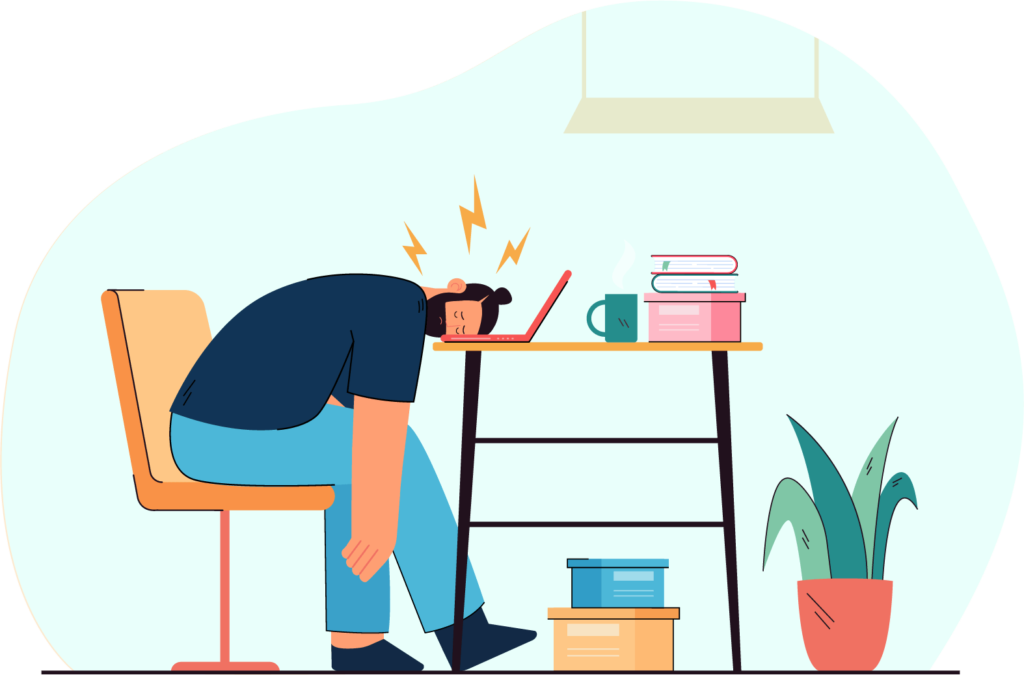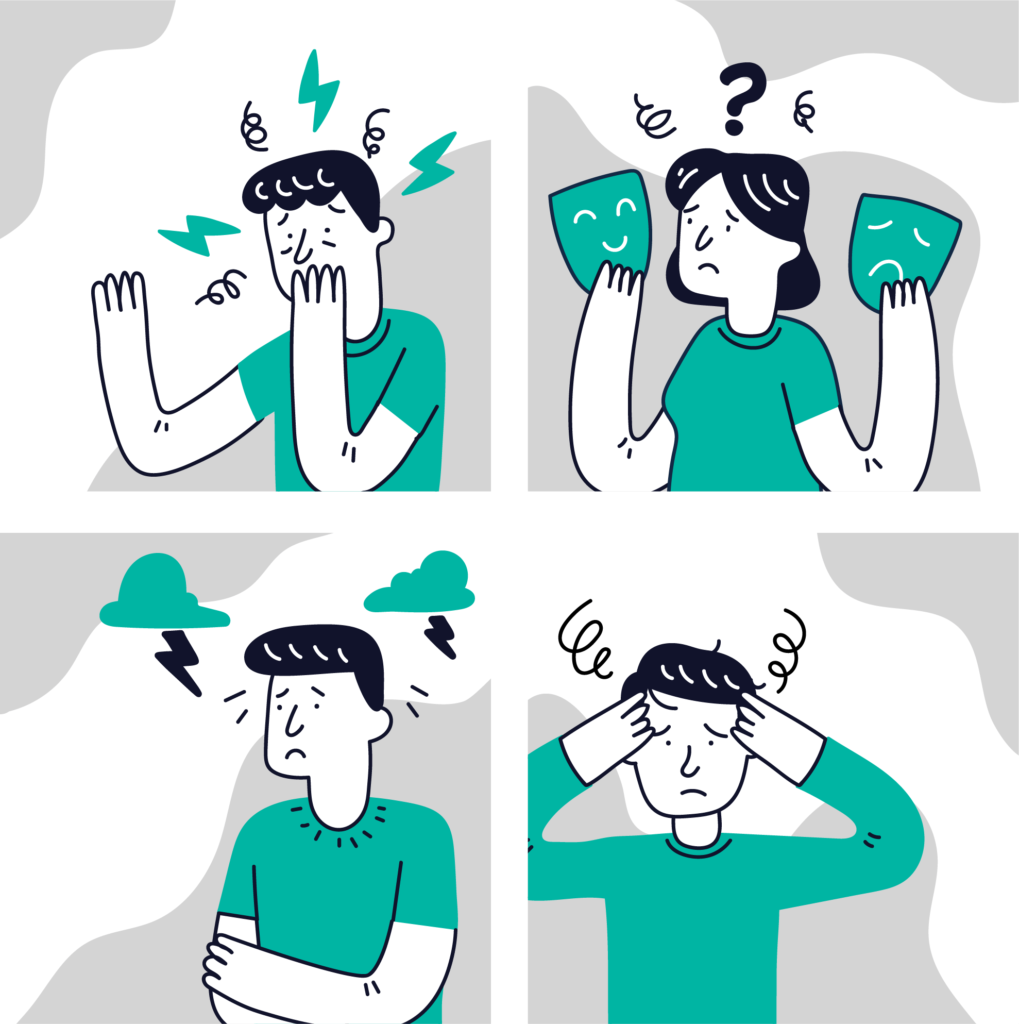Depression
What is Depression?
Depression has traditionally been identified as a mood or emotional condition that manifests itself in stages, according to research. This implies that regular emotional states alternate with depressive periods.
Many other titles have been used to characterize various varieties of depression: neurotic, reactive, or mild depression is one of the most commonly used clinical names, and because of their psychological basis, they are frequently thought to be treated by psychotherapy.
Somatic and psychotic depression, on the other hand, are caused by chemical imbalances and are medically addressed.

Symptoms of Depression

![]() Persistent sad, anxious, or “empty” mood
Persistent sad, anxious, or “empty” mood![]() Feelings of hopelessness or pessimism
Feelings of hopelessness or pessimism![]() Feelings of irritability, frustration‚ or restlessness
Feelings of irritability, frustration‚ or restlessness![]() Decreased energy, fatigue, or being “slowed down”
Decreased energy, fatigue, or being “slowed down”![]() Feelings of guilt, worthlessness, or helplessness
Feelings of guilt, worthlessness, or helplessness![]() Changes in appetite or unplanned weight changes
Changes in appetite or unplanned weight changes![]() Loss of interest or pleasure in hobbies or activities
Loss of interest or pleasure in hobbies or activities![]() Aches or pains, headaches, cramps, or digestive problems without a clear physicalcause and that do not ease even with treatment
Aches or pains, headaches, cramps, or digestive problems without a clear physicalcause and that do not ease even with treatment![]() Suicide attempts or thoughts of death or suicide
Suicide attempts or thoughts of death or suicide ![]() Difficulty sleeping, early morning awakening, or oversleeping
Difficulty sleeping, early morning awakening, or oversleeping ![]() Difficulty concentrating, remembering, or making decisions
Difficulty concentrating, remembering, or making decisions

Persistent sad, anxious, or “empty” mood

Feelings of hopelessness or pessimism

Feelings of irritability, frustration‚ or restlessness

Decreased energy, fatigue, or being “slowed down”

Feelings of guilt, worthlessness, or helplessness

Changes in appetite or unplanned weight changes

Loss of interest or pleasure in hobbies or activities

Aches or pains, headaches, cramps, or digestive problems without a clear physicalcause and that do not ease even with treatment

Suicide attempts or thoughts of death or suicide

Difficulty sleeping, early morning awakening, or oversleeping

Difficulty concentrating, remembering, or making decisions


Persistent sad, anxious, or “empty” mood

Feelings of hopelessness or pessimism

Feelings of irritability, frustration‚ or restlessness

Decreased energy, fatigue, or being “slowed down”

Feelings of guilt, worthlessness, or helplessness

Changes in appetite or unplanned weight changes

Loss of interest or pleasure in hobbies or activities

Aches or pains, headaches, cramps, or digestive problems without a clear physicalcause and that do not ease even with treatment

Suicide attempts or thoughts of death or suicide

Difficulty sleeping, early morning awakening, or oversleeping

Difficulty concentrating, remembering, or making decisions
Diagnosis of Depression

The two main classificatory diagnostic systems (Diagnostic and Statistical Manual of Mental Disorders [DSM], and International Classification of Diseases [ICD]) rely on the identification of a number of key symptoms.

It is crucial to note that major depressive disorder is different from unhappiness or typical feelings of sadness. To qualify as major depression, an individual must present with five or more specified symptoms nearly every day during a 2-week period, and the symptoms are clearly different from the individual’s previous general functioning.

Furthermore, for the diagnosis of a depressive episode, depressed mood or anhedonia must be present. When depressive symptoms are present but are insufficient in number or severity to be regarded as a syndrome, they are sometimes referred to as subthreshold depressive symptoms. These are important as they could serve as early indicators of a major depressive episode.

DSM-5 Key Symptoms for Major Depressive Disorder
Emotional symptoms
Neurovegetative symptoms
Neurocognitive symptoms


